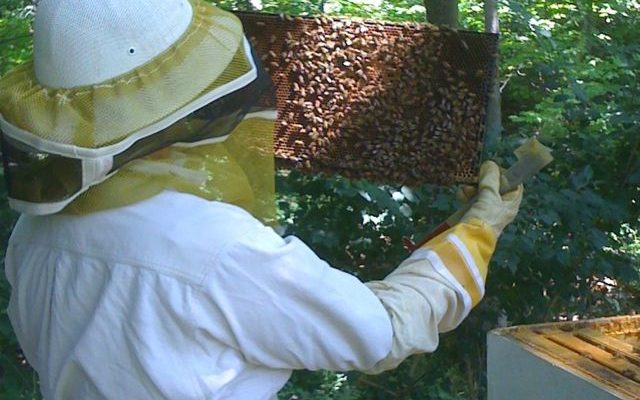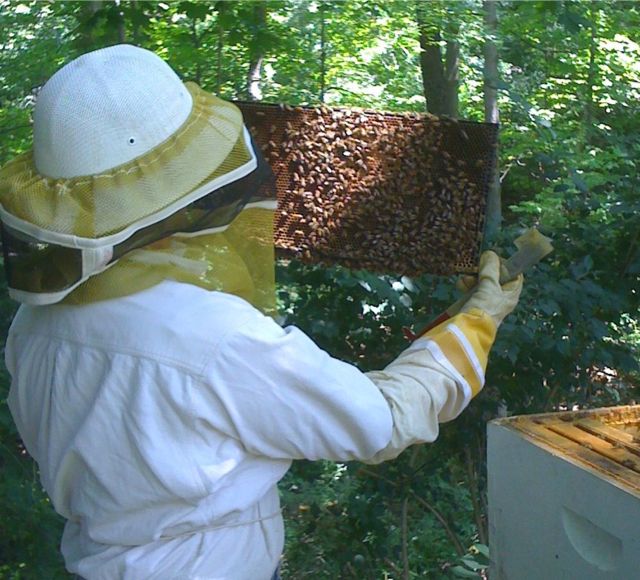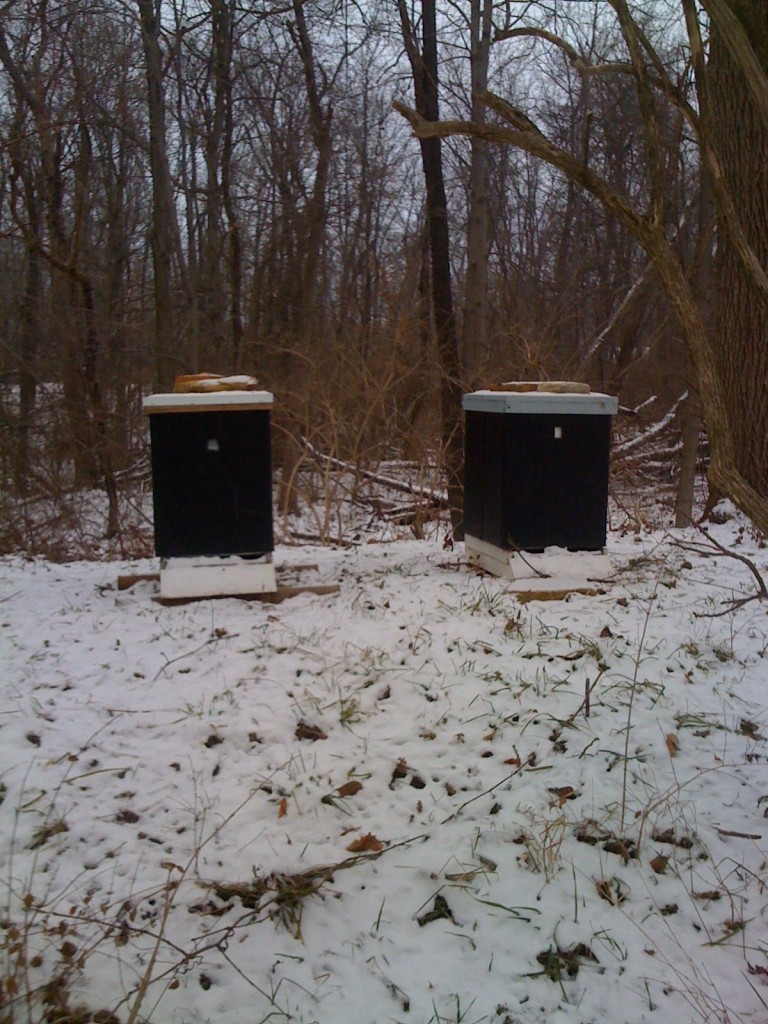Last night I whipped up today’s sugar water for the bees. It’s sort of a messy process.
I mix a 3:5 water-to-sugar ratio. In other words, I heat 3 cups of water and add 5 cups of granulated sugar to it…actually, I quadruple this recipe. If I had a good place to store the stuff, I’d multiply it even further. We’re going through a hell of a lot of sugar…and, let me tell you, sugar gets everywhere. And then sugar water gets everywhere. And then Deb goes a little nutty with cleaning it all up. I try to clean it, and I think I do a pretty good job of it, but inevitably some sugar finds its way under the coffee maker or in some corner, and we can’t have that. You should see Deb with a sink full of soapy water and a rag. It’s a sight.
What amazes me, though, is that when I mix this stuff during the day with the windows open, bees immediately begin bumping against the screens. And they’re incredibly insistent. After I add the sugar to the water, they will bump against the screen alllll daaaaay looong. Until dark. We can’t even eat on the deck because of them. It’s sort of inspiring…they don’t appear angry, they simply appear determined. I should learn from them.
So now I mix the stuff at night. Then I put about 12-15 bottles of sugar water in big 5 gallon buckets with lids and move it all down to the basement where I store it overnight…trying to fake the bees out.
P.S. My neighbor said my bees were really going for his hummingbird feeders. I’ll bet they are! But I’ll bet the yellow jackets and the bumblebees and the hornets are going for it too these days…we’ve not had any rain, so all the flowers and nectar are dried up. I’ve never seen it so dry.





